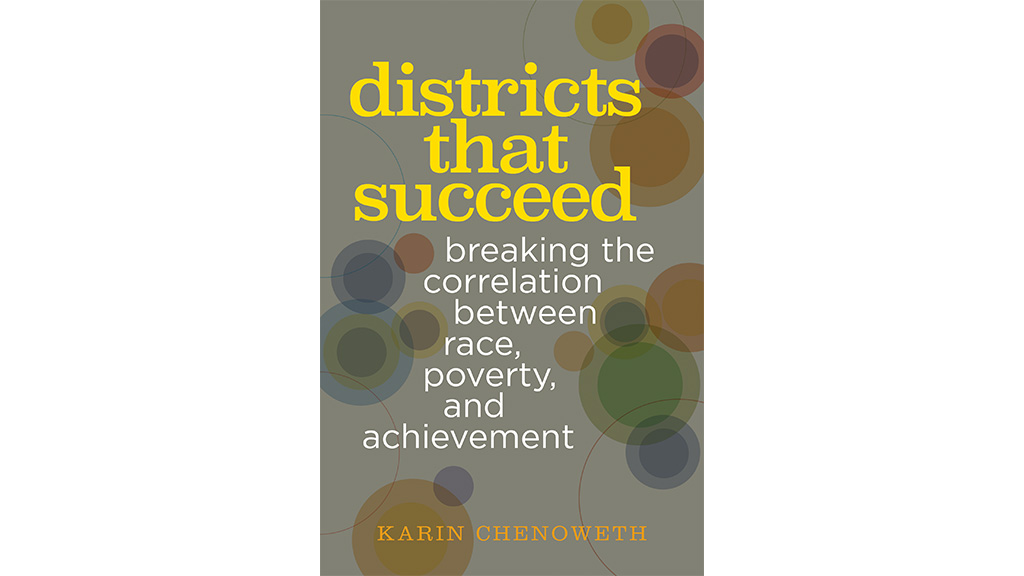
PHOTO CREDIT: HARVARD EDUCATION PRESS
Karin Chenoweth’s work aims to break down previous misconceptions that income is directly related to a student’s academic success. To break these misconceptions, Chenoweth’s research focuses on schools and districts with similar incomes that are able to be successful, despite mounting challenges that come with being economically disadvantaged districts.
Chenoweth writes: “I came to this realization after seeing highly functional schools serving children of color and children from low-income homes deteriorate when their principals were replaced by new ones who did not continue the systems and culture that had made the schools successful.”
A well-known education writer and journalist, Chenoweth strives to increase awareness of how academic success is possible for all children, including minority children and those from low-income families. By focusing on a population that has historically faced speculation about their academic abilities, she shows the education system can be fixed if cohesive leadership, consistency, and vision are shared by all involved.
Chenoweth gives ample evidence to support why misconceptions about race and poverty exist, given how things in education have previously been done. By finding districts and schools that fall into the category of high-poverty with a high-minority population and have data to suggest that these schools’ students are succeeding academically, Chenoweth is able to break this narrative by uncovering what these districts are doing to overcome these challenges. The changes necessary to make these districts successful have little to do with the students’ race, income, or academic success thus far. Rather, it falls on the leadership implemented in the district or school. The recurring theme throughout the book was that good leadership and vision are what make a difference in districts that are succeeding.
This easy-to-read book is filled with tangible strategies and tools that can be implemented to create a successful district. Chenoweth’s work is laid out, case by case, with supporting evidence and firsthand accounts of what was making a difference in these districts. The book would benefit any superintendent, principal, district leader, or educator looking to make a change. By offering valuable information about the advantages of collaboration, self-awareness, and adaptability, Districts That Succeed makes for a great guide to navigate and solve real-world problems in education.
The one weakness of the author’s work is her discounting of the importance of school funding. Low-income areas receive substantially less funding than their high-income counterparts. There is plenty of research that suggests more funding is beneficial. While districts scramble to play catch-up with continuous budget cuts, money is needed for success. While funds alone do not directly dictate success because the money must be spent properly, many districts that turned things around sought out supplemental funding in the form of grants.
In conclusion, there are a handful of characteristics and lessons from districts that succeed: having leaders ready to admit they do not have all the answers, finding supplemental funding to level the playing field, and combatting disparities with a staff united in the same mission.
Stephanie Laica (slaica@uncc.edu) is a doctoral candidate at the University of North Carolina at Charlotte.

Share this content